Before you read episode three, if you missed episode one click, or episode two click
In the video Classical Versus Classique, Christoph Hess, head of the training department of the German National Equestrian Federation e.V., teaches a demonstration lesson. He extolls the rhythm of the horse and gives his ideas on proper form in piaffe and passage. At no point does he address the fact that the horse is traveling so narrowly behind that it is virtually physically impossible for the horse to show any true collection, much less a correct piaffe or passage.
These rope walking mechanics completely escape Mr Hess’s analysis and comments, yet those deviations preclude a horse from shifting its weight towards the rear and carrying a more substantial load with the hind end.
I am not picking on Mr Hess; I am pointing out a mindset that is prevalent among influential trainers and high ranking judges: a lack of attention to limb movements and their deviations. This is how a horse can get a 9 or a 10 for a piaffe in which both hind legs are so close together that they practically step on the same spot and swing sharply away from the spine line of the horse when they are lifted. What can these patterns of travel in a horse’s limbs tell us about the correctness of certain exercises, particularly collection?
In general, we can talk about abduction (pulling away) and adduction (drawing inward) in leg movements. A bipedal animal balances over its two legs. If one of the legs is injured, the healthy leg will move more toward the center line of the body in order to take on a larger share of the load, thus relieving the injured limb. In quadrupeds, the limbs move toward or away from the center line, but they can also move forward and backward, triangulating closer together like an elephant on a stool or spreading into a trapezoidal form and hollowing the back in a ‘park horse stance.’
We often see triangulation in piaffe. Here, the hindquarters sink and come under, but they actually carry very little weight because the front legs have crept backwards under the center of mass. The front legs are supporting the real weight of the horse while the hind legs keep the piaffe rhythm. The hind legs are therefore not fulfilling the requirements of collection. The horse has learned or been trained to relieve the hind limbs from carrying weight.
This often occurs when trainers put more emphasis on rhythm rather than weight shifting, balance, and proper strength training. The opposite often occurs when the horse hollows its back like a park horse as it performs a grand passage or a hollow piaffe. Here, its hind limbs are camped out behind, which the famous General L’Hotte described as the “haunches follow[ing] regretfully.”
As trainers attempt to increase the suspension or cadence in passage or piaffe, the horse may spread its front legs out to the side as it tries to lift the forehand, pushing off of the ground. As the horse tries to satisfy the requirements of collection, each front limb pushes up and to the side, setting up a sway called balancé. In this case, the horse is not using its back and hindquarters to correctly pull the weight up over the hind legs, which should do the lifting. Rather, it is trying to push the weight up and back with the front legs.
The wrong way to start a passage
At this point I can understand why writers of the past would call the piaffe a passage on the spot.
Balancé — this results from the horse attempting to generate lift and thrust with the forelegs.
Another deviation in the limbs is rope walking or fox-trotting. Here, the front legs swing inward toward the center line. Each leg lands under the center line of the body, like a trotting fox or a biped with an injured limb. This movement is usually about saving energy and is not an exhibition of strength. If the hind limbs swing under this way, it is a serious fault, especially if it seems to get more pronounced as the horse collects.
A rolling passage: front view
For an object to remain in balance, a vertical line projected down from its center of gravity must fall within the area of support or the object will tip over. In quadrupeds, this can get complicated because as we have seen, the front and back limbs add another dimension to balance and support. Yet, in the same way a weight lifter will widen his stance to prepare to lift more weight, the widening of the stance in either the front or back limbs is a tip off as to whether or not the horse is lifting and collecting properly. If a weight lifter tries to lift with his feet close together, there is a great risk of compensating with other parts of the body which are not meant to do the lifting. These same kinds of physics and biomechanics affect the horse. For instance, if the horse is asked to collect, and the hind feet move in toward the center line of the body, the horse is trying to get its lift by pushing off of a hind limb, but because the core is weak, the driving force pushes one hip up while the weak core rotates and the opposite front leg rolls under, setting up a continuous rolling pattern. Most of this axial rolling is due to a weak core or a stiff back. Inadequate core strength cannot hold the body level and balanced. If the horse were collecting properly, it would actually widen its hind leg stance and pull the weight back, the core muscles being so strong that when the diagonal pair lifts, there is no twist in the body.
A rolling passage: rear view
If you want to feel what it is described here, get your exercise ball. Bridge your shoulders on the ball, making your stomach and quads a kind of table. Your knees will be bent, with lower legs perpendicular to the ground. Now try to lift one leg, and then the other. Try it with your feet close together as well as further apart. You will see how much more core strength it takes not twist your body and roll off the ball when your feet are wide apart. Piaffe and passage should be demonstrations of great strength resulting from excellent collection technique. Like proper weight lifting, it is a healthy exercise, not a destructive one.
First one leg, then the other
There is a fairly well-known short film of a famous rider and trainer with a beautiful gray mare performing the Grand Prix. It was made to show good examples of riding these movements. However, in the piaffe and passage, the horse is hollow and frozen in the back. The result is the horse cannot tip its hindquarters under its body. The horse tries with more flexion of the hind limbs, but they remain camped out behind. When the camera allows the viewer to see the horse’s legs from behind, they swing spasmodically
to the side. They cannot come under to support the load, but they try anyway.
As I brought up in my second article, the horse either never learned to use its psoas and iliopsoas correctly so it could ‘sit,’ or there is a physical reason why it can’t. Regardless, its back is locked down and all the driving will not get the hind legs to come further under the center of mass. Riding too long and low can also stiffen the backs of horses and actually make them less prepared for the flexing and contractions needed to collect.
In another example, when watching the wonderful competition horse Valegro, (who often shows exemplary uphill form and exquisite rhythm) there is a problem in the piaffe. Even though the hindquarters are down and under, if you view it from behind you will see each hind leg jut to the outside during its swing phase, each one trying to land practically on the same spot in its stance phase. The width of stance will often be a tip-off as to proper technique and where the weight of the body is actually being carried. Because the piaffe is on a continuum of collection, which results in the complete carrying of the forehand by the hind legs, (as in levade) it must be a demonstration of good technique, strength, and shift of balance.
In general, limbs that move toward the body are trying to compensate; stances that widen are trying to carry more weight. However, there are lots of reasons why limbs may
deviate. It can be conformational; the horse has always done it and it is not a result of training collection. Additionally, a horse may swing its leg out to the side because it is being blocked from proper forward movement. A person with a cast on his leg might swing it out to the side in order to bring it forward because it can’t flex properly to swing in a straight line. But, if an abnormality begins to occur in collection, it can be an important signal of weakness or asymmetry.
A good piaffe, passage, or pirouette can be a foundation and demonstration of core strength and body control. Proper collection is proof that the rider has been training the right muscles. Paying attention to these forms is paying attention to healthy technique. Faults in technique can be very difficult to correct and often have a cost to health and longevity. That is why it is so important to watch closely and train correctly. Judges cannot ignore limb deviation, especially if it appears or is exaggerated in collected exercises. Riders and trainers must be observant to see these evasions early and adjust the training. Techniques like alternating leg aids can contribute to rolling limb patterns.
My intention here is not to write a treatise on faulty limb patterns in dressage horses. It is more to point out that limb deviations can indicate something and at the very least, they should be noted. Furthermore, in order to evaluate any collection, one has to observe a horse and rider from the front, from behind, and from the side in the exercises in order to see any abnormalities, which must be fixed early in their development. Care has to be taken in collection. Riders and trainers have to be observant of deviations early and try to fix them before they become habituated. Above all, limb deviations cannot be ignored or worse, rewarded.
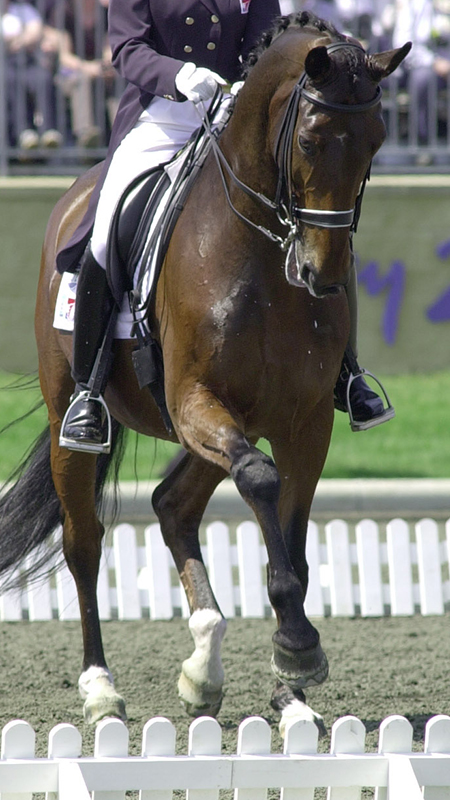
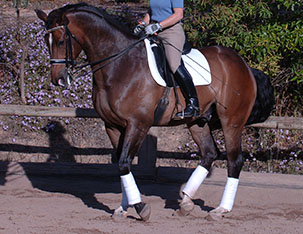
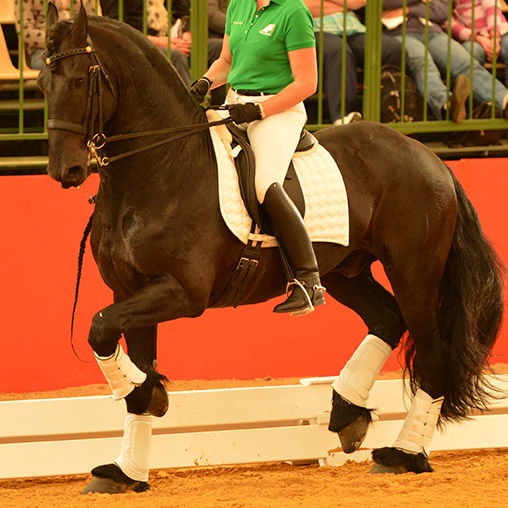
http://www.horsemagazine.com/thm/2017/01/paul-belasik-why-are-fundamental-problems-persisting-in-elite-dressage/




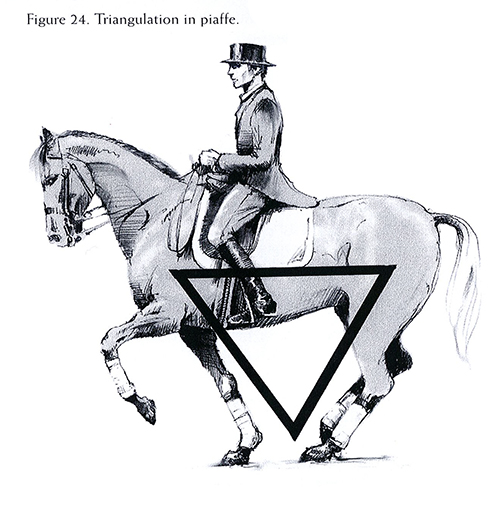
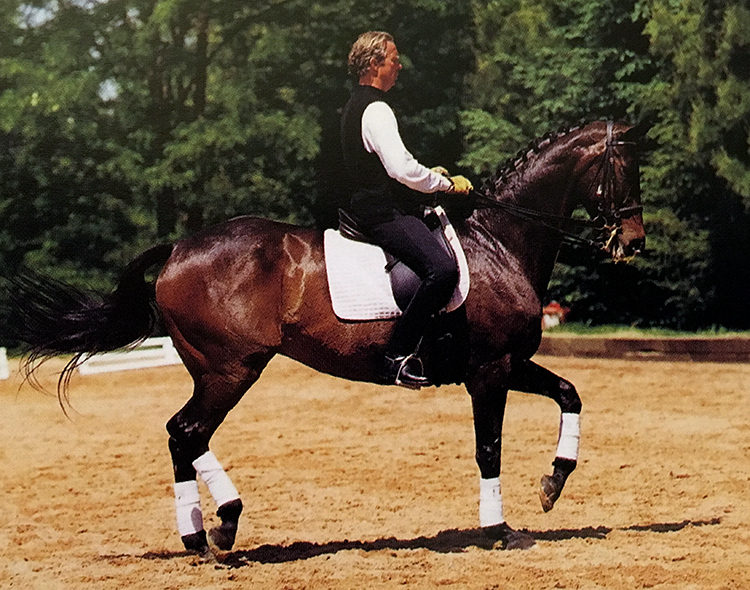
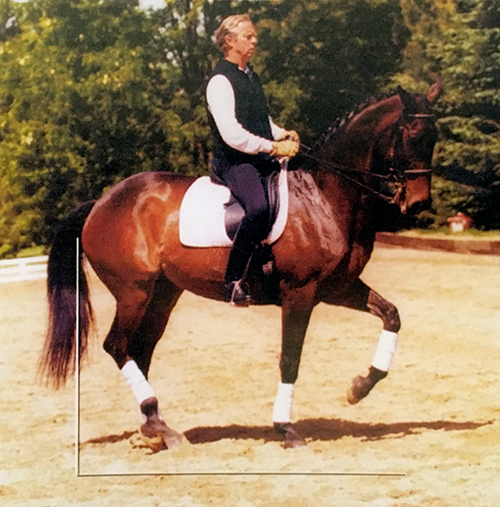
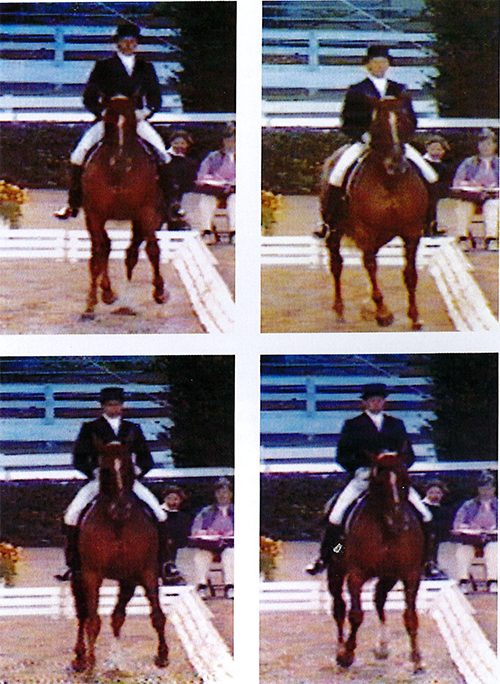
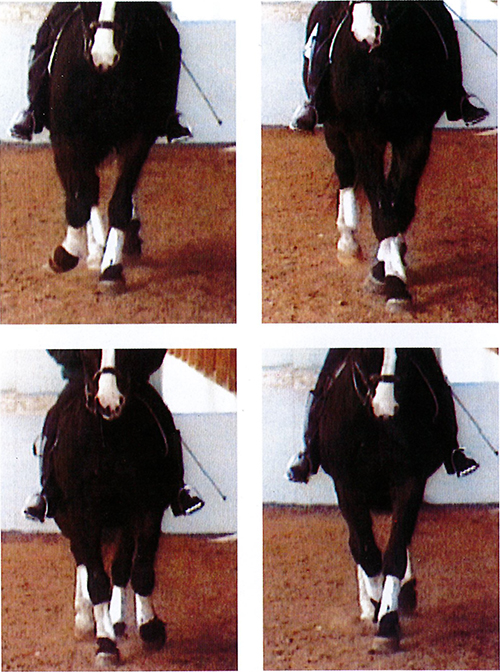
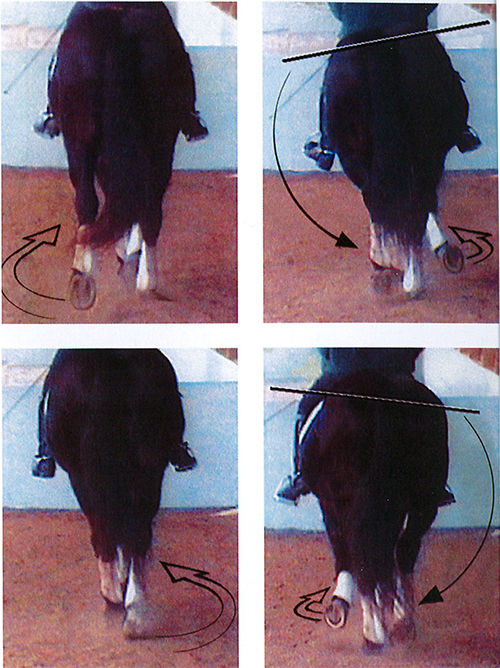


Great article. All intending riders and trainers aiming towards top class work should read it.